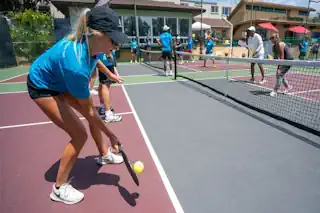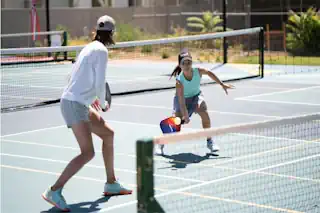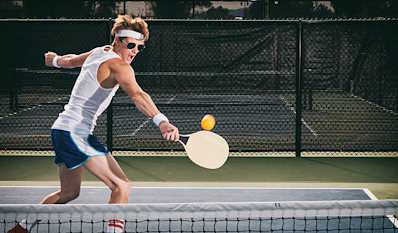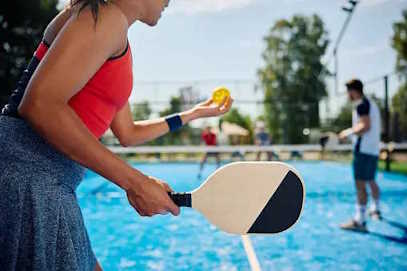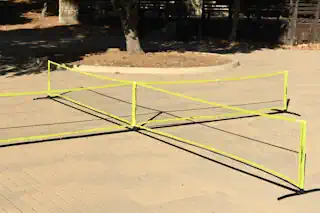Preventing Pickleball Injuries: A Strategic Guide for Players
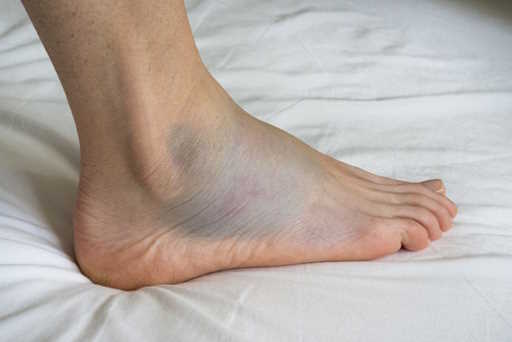
Pickleball isn’t just a game; it’s a rising phenomenon, an adaptable and sociable pastime that’s gripped the interest of countless athletes and weekend warriors. The sound of the paddle’s ‘pop’ is synonymous with fun and camaraderie, but as with any sport, pickleball brings with it the potential for injury. In this comprehensive guide, we’re serving up a smorgasbord of tips designed to keep pickleball enthusiasts on the court and off the injury list.
The Growing Popularity of Pickleball and the Inevitability of Injury
Pickleball’s meteoric rise in popularity is as undeniable as it is infectious. With over 3.5 million players in the United States alone, the sport’s accessibility and varied appeal make it a hit across different ages and fitness levels. Yet, the very things that draw us to the court — quick movements, unexpected plays, and intense, sometimes lengthy matches — also expose our bodies to a range of potential injuries.
Understanding the Impact
Pickleball may seem less demanding than, say, tennis or basketball. However, the stop-and-start nature of the game, combined with the rapid acceleration and deceleration movements, can place unique stress on muscles and joints. According to the USAPA, common injuries include strains, tendinopathies, and overuse injuries. An understanding of what can go wrong is the first step in taking steps to prevent it.
Common Pickleball Injuries to Watch Out For
No one likes to sidestep the joy of the game with an injury. Keeping an eye out for the most common pickleball injuries might just keep you playing longer and stronger. Here they are, the usual suspects:
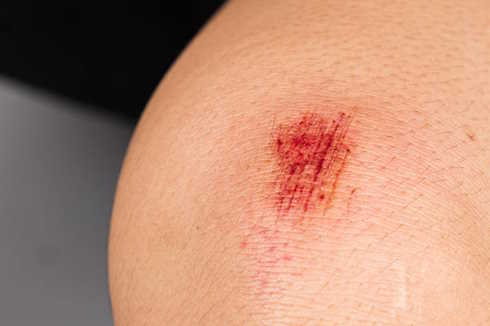
Ankle Sprains: Quick directional changes can lead to rolling or twisting an ankle, causing strains or more severe sprain injuries.
Wrist Tendinitis: The repetitive motion of swinging the paddle can strain the wrist, leading to tendinitis.
Shoulder Injuries: Overuse or incorrect technique during serves and overhead smashes can result in shoulder strains or rotator cuff injuries.
Knee Pain: The fast-paced game can sometimes lead to knee injuries, such as ACL tears or patellar tendinitis, often resulting from sudden stopping and starting motions. A knee injury can take longer to heal that most common injuries in pickleball.
Elbow Tendinitis (Pickleball Elbow): Tennis injuries such as tennis elbow which is an overuse injury caused by repetitive arm and wrist motions can lead to pain around the elbow. A common injury often resulting in more severe pain than you would expect.
Achilles Tendon Rupture: Often overlooked, the Achilles tendon can suffer from the constant running and quick directional changes inherent in pickleball. An abrupt push-off or sudden stop can strain or even tear this crucial tendon, sidelining players with significant pain and mobility issues. A common injury you definitely want to avoid.
Remember, understanding these common injuries is the first step in prevention. Staying informed and prepared can make all the difference in keeping you on the court and out of the doctor’s office.
Muscle Strains and Sprains
Sports fans are well-versed in these; they’re the bread-and-butter of any active game. In pickleball, sudden movements such as pivots, quick starts and stops, or attempts at defensive saves can lead to sprains or tears in the muscles or tendons.
Preventing the Pop
Achilles tendons and calf muscles are often the victims of sprains due to sudden explosive movements. Making sure to warm-up these areas, in particular, can pay dividends. Engage in dynamic stretches for the calf muscles and Achilles tendon before the play heats up, and always warm up for at least 10 minutes with light exercise such as a brisk walk or gentle jogs. The calf muscle and hamstring muscles also need to be nice and warm before playing pickleball.
Shoulder and Elbow Injuries
The serve and overhead shots particularly stress the rotator cuff and the elbow tendons. Over time, repetitive stress or poor biomechanics can lead to chronic issues such as tendinitis or bursitis.
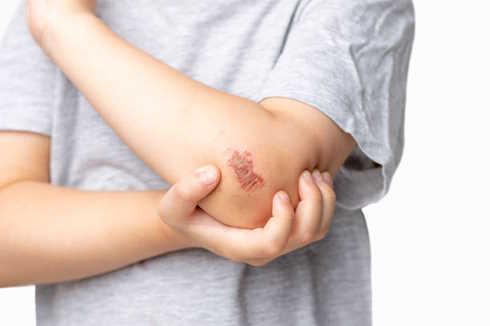
Biomechanical Awareness
Players should focus on the proper technique with overhead shots, including the serve and smash, to reduce the risk of shoulder injuries. Rotator cuff exercises can significantly enhance shoulder stability, while paying attention to the grip and forearm positions can help prevent common elbow complaints.
Knee and Ankle Issues
Pickleball may be gentler on the knees than running, but it’s not without its risks. Quick lateral movements can put undue pressure on these joints, while the stop-and-go actions increase the likelihood of twists and sprains to the ankles.
Strategic Footwork
Ensuring proper court shoes with good lateral support is essential. Strengthening exercises for the knee and ankle can also help bolster these areas against the rigors of play. Athletes must also ensure they’re playing on a well-maintained court to avoid unexpected hazards that might cause potential leg injuries.
Injury Prevention
Injuries can be a real pickle, but preventative measures are the proverbial brine that can keep players fresh and injury-free. Most common pickleball injuries are easy to recovery from but acute injuries, especially in senior players can linger for months and impact all forms of physical activity.
Step Up Your Warm-Up Game
Adequate warm-up is not a luxury; it’s a necessity. Spend time loosening up every part of the body, not just the sections you think will see the most action. A routine that incorporates arm swings, lunges, and side-to-side stepping can help prepare your body for the game ahead.
Invest in Quality Gear
Your choice of paddle, shoes, and even clothing can impact your safety on the court. Be sure to choose paddles and shoes that not only enhance your performance but also ensure reasonable protection against injury. Running shoes or tennis shoes specifically designed as court shoes are worth the investment.
Technique is Key
Practice your shots and movements with a focus on good form. Pushing yourself to the limit won’t do any good if your form is off. It’s wise to have a coach observe and provide feedback on your technique.
Quality Rest
Games are like wallets; players should not view them as inexhaustible. Proper rest is vital for recovery and injury prevention. Don’t hesitate to take a breather when needed, and ensure you get enough sleep each night to aid your body in its recovery.
Be Proactive
Unexpected injuries can knock the wind out of the sails, but a proactive approach can dramatically reduce the likelihood of surprise medical timeouts. A sports medicine physician can be a great advisor for preventing pickleball related injuries before they occur.
Similarly, physical therapy professionals specializing in sport medicine can give you exercises to prevent pickleball injuries or at least significantly reduce the risk of injury.
Safety Tips for Different Player Groups
Here’s where we sling some strategic advice at specific segments of the pickleball population.
Beginners, Watch Your Step
When you’re new to pickleball, it’s tempting to jump in and play as hard as you can. But it’s important to start slow and gradually build up your playing time. Perfect the basics first, which include the serve, return, and good footwork.
Seniors, Age with Grace
For senior players, the message is clear — continue playing and stay fit, but be mindful of not overexerting yourself. Engage in specific exercises that strengthen the muscles around the joints most active during a game, adopt a game style that minimizes potential hazards, and always consult with a physician or physical therapist about your fitness to play. Overuse injuries are a real issue especially upper extremity injuries like tendon tears.
Veterans, Don’t Get Complacent
After years on the pickleball circuit, it’s easy for experienced players to fall into less-than-ideal habits or to skip the essentials in the rush of a game. Remember, every game is an opportunity to practice injury-preventing techniques.
Post-Injury Recovery
It’s not just about how to avoid injuries; it’s also what to do after the fact.
RICE, the Pain Reliever
The Rest, Ice, Compression, Elevation (RICE) method is a classic for a reason. It’s a simple and effective way to manage pain and begin the recovery process. Implementing RICE as soon as possible after an injury can reduce inflammation and speed up healing.
Professional Recovery
Don’t be a hero. Seek out a physical therapist or sports medicine professional who can guide your rehabilitation. They offer valuable expertise and will design a plan that helps you heal quickly and fully.
Back to the Basics
When returning to the court after an injury, take it easy and work your way back into the game gradually. Seek physical therapy and follow the recovery guidelines. Don’t rush the process; it’ll only lead to setbacks.
Conclusion
Injuries are an unfortunate pickle in the barrel of any sport. However, with conscientious preparation, mindful play, and intelligent recovery, injuries can be not only reduced but often avoided altogether. Remember, when it comes to pickleball, the key to a long and satisfying time on the court is to play smart, and be healthy, and to be aware.
Frequently Asked Questions (FAQs)
Q: What’s the best way to prevent a pickleball injury while playing pickleball?
A: Prevention is all about preparation. Make sure to properly warm up before playing, use the right equipment, pay attention to your technique, and give your body the rest it needs. Also, being proactive with exercises that strengthen the muscles used in pickleball can make a big difference.
Q: Can I play pickleball if I’m recovering from an injury?
A: Yes, but with caution. It’s crucial to listen to your body and the advice of a healthcare professional. Depending on the injury, you may need to modify your play or participate in a rehabilitation program before returning to the court at full capacity. Overuse injuries can quickly turn into a severe injury that will impact more than your pickleball game.
Q: How important is the choice of shoes for playing pickleball?
A: Extremely important. The right shoes provide the necessary support for the quick lateral movements common in pickleball, reducing the risk of ankle and knee injuries. Look for shoes with good lateral support and a sole that’s suitable for the surface you’re playing on.
Q: Is it necessary to see a coach for technique advice?
A: While not strictly necessary, a coach can provide invaluable feedback on your technique that can prevent injuries. Even experienced players can benefit from occasional sessions to correct bad habits or to refine their serve and shots.
Q: What should I do immediately after I get injured on the court?
A: Apply the RICE (Rest, Ice, Compression, Elevation) method to address the injury and minimize swelling. It’s also wise to consult a healthcare professional as soon as possible to assess the severity of the injury and to get a tailored recovery plan.
Q: How can I stay fit for pickleball as I get older?
A: Focus on maintaining flexibility, strength, and cardiovascular health through regular exercise tailored to your needs and abilities. Also, adjust your playing style as necessary and consider more strategic positioning over physical aggression on the court.
Q: Are there pickleball-specific exercises I can do off the court?
A: Yes! Exercises focusing on core strength, agility, and balance, as well as rotator cuff strengthening and leg workouts, can greatly improve your game and reduce injury risk. Incorporate these into your fitness routine to help enhance your on-court performance.
